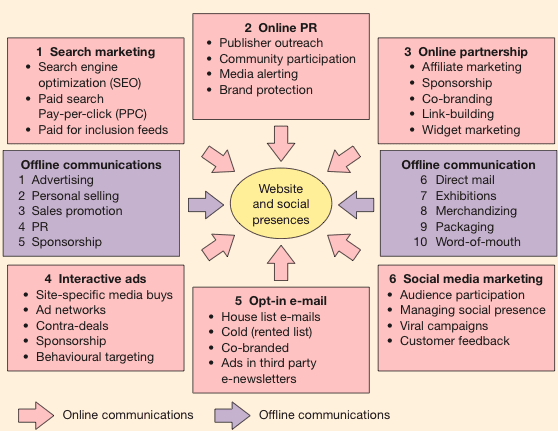There’s no arguing with the fact that creating an app for your brand can be key in driving success (Anthes, 2012). According to Sheng et al (2015), it is vital for a brand to consider creating an app, despite the risks, to gain competitive edge and more loyal customers. However, with 2.8 million Android apps and 2.2 Apple Store apps available & rising (Statista, 2018), it is vital you consider these 5 simple steps to support your app launch and maximise downloads.
This tremendous amount of competition on the app market may, understandably, have you feeling app-rehensive about launching an app and potentially leaving you un-appy that your app may be under app-reciated. However, you should worry no more as this blog promises to alleviate your concerns (as well as promising to put an end to the terrible puns) by providing 5 effective ways to boost your app’s downloads. Oh, and they’re completely FREE – winner.
- Improve your App Store Optimisation (ASO)
ASO is the process of improving a mobile app’s visibility in the store by optimising each metadata element (app title, description, keywords, screenshots, etc.) according to the store and trends’ best practices. This is a crucial step as it ensures your app is more visible in the Store’s charts, increasing downloads naturally. Despite it’s increasing popularity, many app developers do not utilise ASO so take advantage of this cost effective tool and stay one step ahead.
If you’re stuck on what keywords to use for your ASO, you can download a great cheat sheet here to introduce you to the idea. Similarly, you can download a free trial to AppTweak which is a great tool to improve your app’s ASO.
AppTweak Website, 2018
2. Start Building Your Online Presence
The more brand awareness you have, the more app downloads you will receive. In other words, push your app everywhere you can on the web. Whether this be integrated on your website, your social media platforms or email lists, shout to the world about how great your app is & how they can’t be without it – the more information the better.
Once you’ve got people to download the app, make sure your app design is creative, personal and, most importantly, maintains your brand’s identity. The aim is to encourage users to spread your app awareness themselves, therefore make the content about the app insightful and exciting, making the customer want to be the first to tell their friend’s about your great idea.
Here’s a great example from UberEATS’ Facebook page, encouraging users to promote their app and leveraging the power of social media – you can do this too!
3. Make Your App Free At Launch
This may sound easy, but it will drastically increase your app downloads – you have my word. Don’t panic though, you don’t have to do this indefinitely, but by creating a free period will stir curiosity, driving downloads and entice users in to your wonderful app.
Once your engagement rate increases, the App Store/Play Store will reward you by boosting your app rankings. Your app will therefore be more visible and therefore you’ll see your app installs increase – result!
4. Ask Your Users to Rate / Review Your App
Not only will boosting your app rankings improve download volume, but positive customer reviews will entice new users further. App users heavily rely on other app users’ opinions before downloading an app. If you have bad reviews or a low number of reviews and ratings, you can be sure that your conversion rate will be very low.
A great way of encouraging users to review your app is through push notifications whilst the app is operating. This will be sure to boost your reviews fast and effectively. Be careful not to bombard your users with this though as it may have a negative effect on the user’s experience. Read about how to effectively use push notifications for reviews here. Below is an example from Rdio on how this is done well.
5. Get Your App in the Spotlight!
Last but not least, it is essential to try getting other people to mention or talk about your app. This will reinforce your brand awareness and reputation, which will inevitably bring you more downloads. Ehrenhard et al (2017) discuss the importance of how brands, especially start-ups, should focus on this cheap and effective method to spread awareness about your app – sparking conversation in the most relevant parts of the web to your target audience.
“What’s the best way of going about this”, I hear you ask. Well, start by building a complete press kit (app screenshots, logos, brand info etc), ready to send out to as many influencers and press as possible. This will build your brand reputation as well as boosting app downloads. For example, if you’re launching a fitness app why not try and get a sport star like Mo Farah to promote your work? Or Jamie Oliver for a food app? You get my drift. Just always remember – promotion is key.
Watch this insightful video to learn even more about how to boost your app’s success. Now, what are you waiting for? Go and tell the world about your app!
REFERENCES
Anthes, G. (2012) Invasion of the mobile apps, Commun. ACM, 54 (9), pp. 16-18
Ehrenhard, M.L., Wijnhoven, A.B.J.M., van den Broek, Tijs Aiaan & Zinck Stagno, M. 2017, “Unlocking how start-ups create business value with mobile applications: Development of an App-enabled Business Innovation Cycle”, Technological forecasting and social change, vol. 115, pp. 26-36.
Sheng H., F.F.-H. Nah, K. Siau, Strategic implications of mobile technology: a case study using Value-Focused Thinking, J. Strateg. Inf. Syst., 14 (3) (2015), pp. 269-290
Statista (2018) Number of Apps available in leading app stores [Online] Available at: https://www.statista.com/statistics/276623/number-of-apps-available-in-leading-app-stores/ [Last accessed 26 Mar 2018]








 Ella’s Kitchen, 2017
Ella’s Kitchen, 2017









